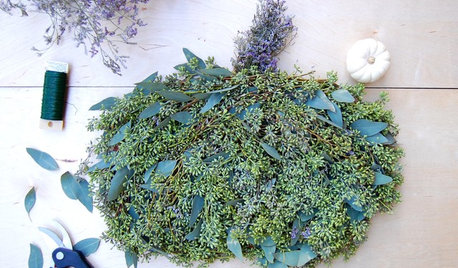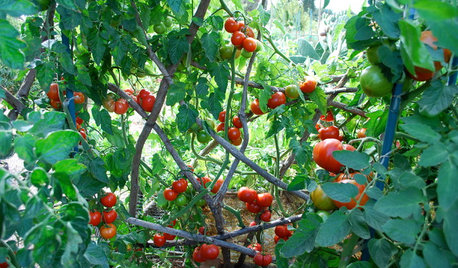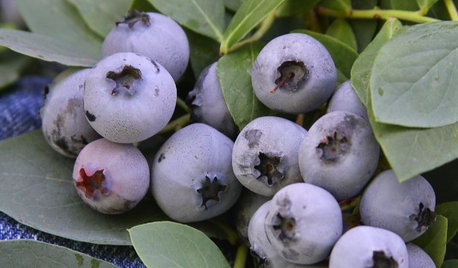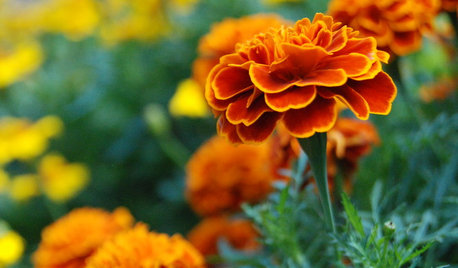OK to Start Seeds of Pumpkins, Canteloupe, Watermelon?
susanlynne48
12 years ago
Related Stories

HOLIDAYSFall DIY Project: Pumpkin-Shaped Eucalyptus Arrangement
Freshen up your front entry with this easy-to-make decorative piece
Full Story
GARDENING GUIDESTexas Gardener's March Checklist
So long, freezing temperatures. It's time to kick off spring planting, lavish attention on lawns and sprinkle seeds to your heart's content
Full Story0

GARDENING GUIDES15 Favorites for Your Summer Edible Garden
Get your summer garden off to a good start with these popular fruits and vegetables
Full Story
EDIBLE GARDENSHow to Grow Your Own Sweet Summer Crops
This guide will help any gardener get started on growing the freshest warm-season veggies and berries for summer
Full Story
REGIONAL GARDEN GUIDESNortheast Gardener's October Checklist
Go for the gold, get ready for frosts and note your garden combos that looked great
Full Story
GARDENING GUIDESVegetables and Flowers Mix in Beautiful Edible Gardens
Ornamentals, meet your edible garden mates. We know you'll get along just beautifully
Full Story
GARDENING GUIDESOrganic Matters: Thwart Insect Pests With Trap Crops
Add a few sacrificial plants to your garden to lure insects away from the harvest
Full Story
EDIBLE GARDENSHow to Cultivate a Young Gardener
Want your kids to eat their vegetables? Let them have an edible garden of their own. Here are some tips on gardening with children
Full Story
MOST POPULARKitchen of the Week: Broken China Makes a Splash in This Kitchen
When life handed this homeowner a smashed plate, her designer delivered a one-of-a-kind wall covering to fit the cheerful new room
Full Story
LAUNDRY ROOMSThe Cure for Houzz Envy: Laundry Room Touches Anyone Can Do
Make fluffing and folding more enjoyable by borrowing these ideas from beautifully designed laundry rooms
Full Story


Okiedawn OK Zone 7
susanlynne48Original Author
Related Discussions
Watermelon and pumpkins together?
Q
Fruit set on watermelon and pumpkin
Q
First watermelon, now pumpkins!
Q
watermelons and pumpkins and summer squash
Q
Okiedawn OK Zone 7
mulberryknob
Okiedawn OK Zone 7
soonergrandmom
Okiedawn OK Zone 7
soonergrandmom
susanlynne48Original Author
soonergrandmom
Okiedawn OK Zone 7